ETIAS Questions
Below are some of the frequently asked questions about ETIAS
What is ETIAS?
- ETIAS (European Travel Information and Authorization System) is a form of electronic travel authorization, also known as a visa waiver. Beginning mid-2025, non-EU visitors traveling to the Schengen Area without a visa will need to obtain the visa waiver. After gaining access to the Schengen Area, visitors can move freely between the Schengen countries.
What is ETIAS for?
- ETIAS (European Travel Information and Authorization System) is a form of electronic travel authorization, also known as a visa waiver. Beginning mid-2025, non-EU visitors traveling to the Schengen Area without a visa will need to obtain the visa waiver. After gaining access to the Schengen Area, visitors can move freely between the Schengen countries.
Can I study in Europe with an ETIAS?
- No. ETIAS cannot be used for long-term studies in Europe. Students need to get a relevant visa or permit to attend university or another educational institution.
Do I need an ETIAS to attend a conference in Europe?
- Yes. If you are attending a convention or seminar in a Schengen nation, you will need to apply for an ETIAS.
What are visa waivers and how do they work?
- A visa waiver is a document that allows travelers from visa-exempt countries to enter into a foreign country, with only a passport, for up to 90 days. Visitors coming from countries that are not visa-exempt are not eligible for a visa waiver, and must provide a visa to cross the border into their destination country. Travelers can apply for a visa waiver, by registering on their destination country's government website, and providing basic personal details and passport information. The information gathered from travelers allows for advance verification of potential security issues, irregular migration, and high epidemic risks. Visa waivers are also sometimes referred to as an electronic travel authorization. Both names refer to this special entry permit for visa-exempt visitors. Citizens of non-EU countries that do not require a visa to enter the Schengen Area will need to register for ETIAS before their trip, starting in mid-2025, ETIAS is Europe's Visa Waiver.
What are the advantages of ETIAS?
- Improve Security: ETIAS coordinates with databases like, SIS, VIS, EUROPOL and Interpol, this means that people who are potentially dangerous will be flagged in an effort to curb terrorism and organized crime. Better Border Management: An up-to-date border system that coordinates with other major systems around the world will allow officials to manage border security more efficiently.
Who needs an ETIAS travel permit?
- Passport-holding citizens, including minors, from all visa-exempt countries, will be required to apply for an ETIAS visa waiver before their trip to the Schengen Area, if they want to be permitted entry without a visa.
Who is exempt from ETIAS?
- Only citizens of EU countries will be exempt from ETIAS. They can continue to enjoy free movement within the Schengen Area.
Do I need a visa in addition to ETIAS?
- No. Visa-exempt citizens traveling to any country in the Schengen Area for tourism, business, or short-term medical treatment will only need an ETIAS visa waiver. With ETIAS, visitors can stay in the region for up to 90 days without a visa. Stays of longer than 90 days will require a visa.
Is ETIAS required for transit passengers?
- Yes. An ETIAS authorization will also be required for travel through the Schengen Area en route to another country.
Do children need an ETIAS?
- Yes. Passport holders under the age of 18, from visa exempt countries, are required to apply for an ETIAS. A parent or guardian can apply for an ETIAS on their child's behalf.
What is the difference between the EU and the Schengen Area?
- The EU is a political and economic union consisting of 27 member countries. The EU allows for the free movement of people, goods, services, and money. EU citizens have the freedom to study, work, live and retire in any European Union country. The regulations for EU visitors are slightly different though. Visitors can only travel freely between countries in the EU that are in the Schengen Area. There are currently 26 Schengen member states. Most are countries within the EU, although not all of them are.
SIGN UP FOR OUR NEWSLETTER
Be the first to receive exciting updates, exclusive offers, and valuable content directly to your inbox.
